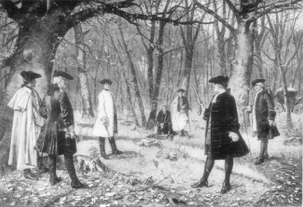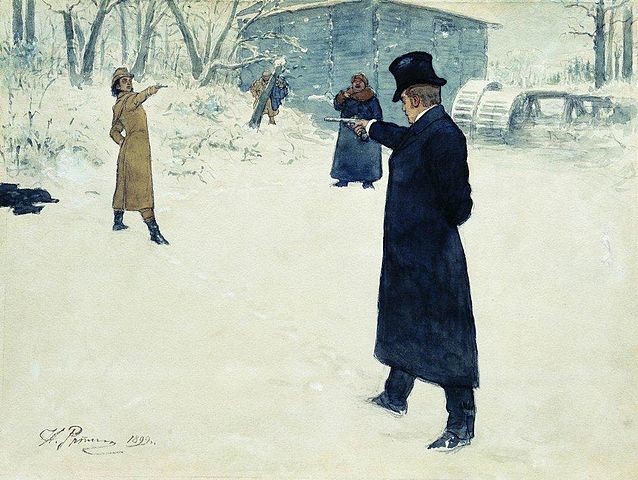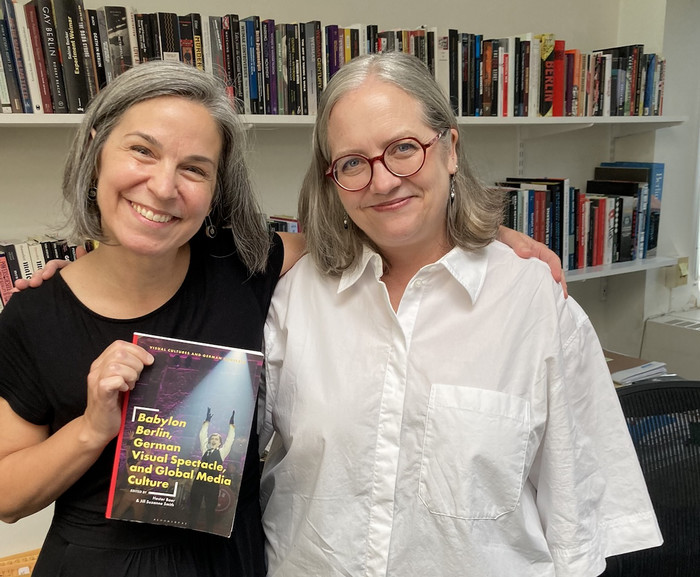Ten Paces, Two Shots: The Duel as a Literary Device
By Tom PorterPicture the following scenario, said Visiting Assistant Professor of German Andrew Hamilton at a recent faculty seminar: It’s the early 1800s and two European cavalry officers—let’s say Russians—are playing cards after a heavy meal and lots to drink. It’s the early hours of the morning and they are both the worse for wear. One of them has been losing quite heavily and starts to get suspicious. Several hands are going the way of his opponent, whom he thinks is dealing a little strangely. He rises unsteadily to his feet and accuses his fellow officer of cheating.

What happens next is not a drunken argument or a brawl. Instead a challenge is issued, and the two men agree to fight a duel the next morning. They convene in a field at dawn, hungover, accompanied by two “seconds,” and take turns firing pistols at each other. Maybe one of them will be wounded, maybe one will die, but more likely—thanks to the inaccuracy of early firearms—they will both emerge unscathed from the encounter. “The important thing is that both men faced the possibility of death as they stood to face one another, and once the duel was over they probably shook hands and put the whole thing behind them. Maybe they had another drink? There are no grudges, no hard feelings, and most importantly, the duelists have proven that they are gentlemen above reproach.”
Scenes like this used to be commonplace, said Hamilton, with thousands of officers, gentlemen, and aristocrats fighting duels with each other on both sides of the Atlantic for reasons which seem absurd today. “Casanova fought a duel because he visited two friends in the wrong order, while Bismarck fought a duel in 1851 over the question of who had the right to smoke during cabinet meetings.” Although duels were not without risk, he continued (especially as pistols became more accurate in the later nineteenth century), they were, for a long while, primarily a way for men to posture and to resolve disputes with their honor and dignity intact.

“When I put it this way, it becomes obvious why the duel would be a favorite topic for writers and artists. It is exciting, and it is bound up with social heirarchies, with masculinity, with honor, with violence.” In reality, said Hamilton, duels also tended to prevent conflicts from escalating into further bloodshed: Once the duel is over, the matter is forgotten, there is no cycle of violence and revenge.
Hamilton is currently working on a book about the duel as a literary device, drawing on a number of examples from ancient times up until the 1980s. He chose three literary duels to talk about in his seminar. The first is from a musical play and it concerns his namesake, Alexander Hamilton, arguably the most famous duelist in history, thanks to the eponymous hit show. “It’s a coincidence I share a name with Hamilton, but it should help me market the book!” he joked. “Hamilton’s death in a duel with his political rival Aaron Burr is full of meaning and dramatic significance. It marks the climax of the musical and symbolizes the culmination of a clash between two political ideologies.”
The other two examples, however, show different ways a literary duel can work and how “an author can take this classical model and turn it on its head.” In Fyodor Dostoyevsky’s 1880 novel, The Brothers Karamazov, there’s a description of an episode in which one of the characters—the elderly monk Father Zosima as a young army officer—gets into a pointless dispute which leads to a duel. However, on the eve of the event, he has a life-altering change of heart and rejects violence. When the moment comes, Zosima refuses to fire at his opponent, to whom he apologizes and begs for forgiveness. The two men are reconciled and violence is avoided.
The third example is from Thomas Mann’s 1924 novel The Magic Mountain, in which two men of drastically opposing viewpoints—a humanist and a reactionary—fight in words for hundreds of pages before eventually facing each other in a duel. “The two characters represent tradition and progress, and the reader is likely to see the duel as a symbolic clash between these two ideas, one of which must prevail.” It’s not that simple, though, explained Hamilton, because the novelist pulls a “bait and switch” in which the duel sees one character, the humanist, fire his weapon into the air in a rejection of violence, while the other, overflowing with rage, turns his gun on himself.

Such literary examples, explained Hamilton, illustrate that, while the duel in literature can be used as a metaphor for the decisive clash of two conflicting ideas, it is also employed to convey the complexity and nuance of real life situations. “In the real world, there are rarely clearly defined winners and losers. What appears to be a straightforward structure—A duels B, someone wins—becomes quite messy in the execution, and it is dangerous and dishonest to try to flatten life into these black-and-white constructions.”



